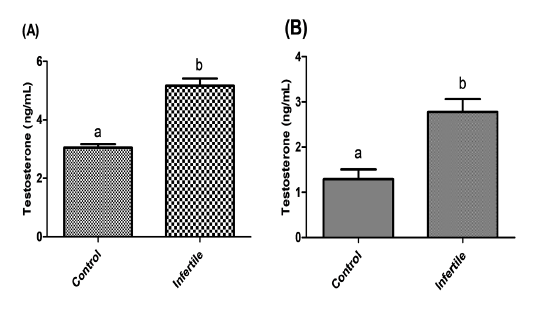Evaluation of Blood and Seminal Plasma Testosterone and Aldosterone Levels and their Consequences on Semen Parameters and Fertility in Dromedary Camels
Evaluation of Blood and Seminal Plasma Testosterone and Aldosterone Levels and their Consequences on Semen Parameters and Fertility in Dromedary Camels
Moustafa M. Zeitoun 1,3; Mohamed M. Mansour 2,4*
Testosterone concentration (ng/mL) in (A) the blood plasma and (B) the seminal plasma of control (served as sires for breeding females, n = 20) and infertile (inability to achieve conception in fertile females after persistent attempts over one [7 months] or more breeding seasons, n = 40) dromedary camels. Different letters denote significant differences at p < 0.05.
Aldosterone concentration (pg/mL) in (A) the blood plasma and (B) the seminal plasma of control (served as sires for breeding females, n = 20) and infertile (inability to achieve conception in fertile females after persistent attempts over one [7 months] or more breeding seasons, n = 40) dromedary camels.









